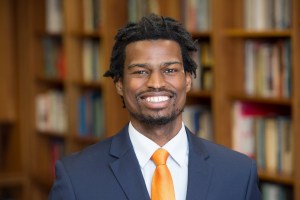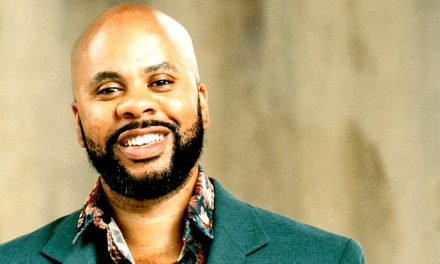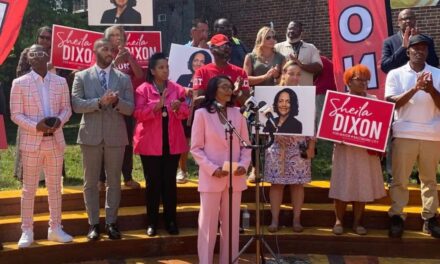
DaQuan Lawrence is a global human rights advocate and scholar activist. (Courtesy photo)
By DaQuan Lawrence, Global Human Rights Advocate
While some Historically Black Colleges and Universities (HBCUs) have benefited from attention brought by social injustice, it is important to recall the needs of HBCUs that existed before the current wave of private and corporate social activism. Although contributions from alumni, foundations, philanthropists and corporations are incredible and necessary, the public should recognize the often forgotten, overlooked and influential HBCU stakeholders – state and federal governments.
With histories as land-grant institutions responsible for educating former enslaved peoples, the HBCU network of stakeholders is comprised of students, alumni, parents, administrators and faculty, staff, neighboring communities, financial supporters and advocates. Yet, state and federal government administrators are also significant stakeholders of HBCUs due to their influence over the financing, funding regulations and budgetary appropriations Black colleges receive.
HBCU Underdevelopment
Although 50% of Black colleges and universities are public, state-funded institutions, and 50% are privately funded institutions, both public and private schools have been historically underfunded and denied funding by both state and federal governments. HBCUs in Alabama, Maryland, Mississippi and South Carolina recently issued lawsuits contesting state funding, while the federal government is known to have denied Black colleges funding available to Predominantly White Institutions (PWIs) for decades.
The underfunding of HBCUs – which are institutions that primarily serve people of African descent – is comparable to the underdevelopment of predominantly Black communities in the U.S., as well as the underfunding of public schools in urban and rural areas that primarily serve Black people. Furthermore, the unfortunate trend of underdevelopment in public policy even extends to African and Caribbean nations, which also suffer from underfunding and a lack of equitable resources.
Both U.S. state and federal governments are integral stakeholders that inevitably determine the economic investment, monetary appropriation, and fiscal support HBCUs, Black communities and schools, and African and Caribbean nations receive via public policy.
Federal Funding & Competitive Grant Status
When the Biden-Harris Administration announced the re-establishment of the White House Initiative on Advancing Educational Equity, Excellence, and Economic Opportunity through HBCUs in September, many were optimistic that HBCUs would receive exclusive support from lawmakers. Merely weeks later, the Build Back Better Act received alterations affecting HBCUs, which are now slated to receive $4.82 billion, with access to another $47.5 billion available to HBCUs, Tribal Colleges and Universities (TCUs) and minority serving institutions (MSIs).
The latest iteration of the bill, which was drafted by the House Education Committee, was supposedly reduced due to disagreement among Democratic legislators. No matter which party publicly “shoulders blame”, the challenges HBCUs endure are bipartisan and nonpartisan concerns, like every human rights issue.
Funding will ultimately be awarded on a competitive basis and HBCUs will compete against MSIs with more resources, although schools that engage in high levels of research will be ineligible. The Department of Education categorizes more than 800 colleges and universities as “minority-serving” due to their history, student composition and capacity.
To distinguish HBCUs from other institutions that serve minorities but also have dedicated grant writers, Congressional leaders are trying to allow HBCUs to bid for funding among themselves. This approach has drawn criticism from HBCU leaders and within Congress, as members believe a competitive grant structure is an unnecessary obstacle for HBCUs.
Fluctuating Endowments, Cumulative Expenses
HBCU endowments are disproportionate as the approximate aggregate endowment of HBCUs in FY-2019 was $4 billion, compared with the $626 billion aggregate endowment of PWIs. Considering the challenges exacerbated by the COVID-19 pandemic, the public must recognize the disparities among HBCUs as private, public, smaller and larger institutions have varying endowments. The five wealthiest private Black colleges had endowments between $73,000 and $200,000 per student in 2019, while the largest endowment for a public Black college was less than $25,000 per student.
The $1.06 billion for HBCU-specific funding in the FY-2022 budget request via the latest version of the “Rebuild America’s Schools Grant Program”, is comparable to the endowment of a single PWI, such as the University of Nebraska, which has a $1.7 billion endowment.
With origins dating back to U.S. slavery and the antebellum era, some HBCUs have buildings older than 140 years, making maintenance expensive. The average HBCU has $80 million in infrastructure maintenance costs, according to Dr. Tony Allen, head of the White House HBCU Advisory Board. Per a 2018 Government Accountability Office report, private HBCUs reported deferred maintenance backlogs of $17 million, while public HBCUs reported $67 million.
A Notable Example in the District of Columbia
As Howard University students continue their protest for improved living conditions in Washington, D.C., we should not overlook that the U.S. Congress chartered Howard on March, 2 1867, and the Department of Education approves the budget for Howard and its hospital.
Surely the off-campus administrators of Howard’s budget are accountable to students, and responsible for ensuring humane housing conditions for one of the nation’s leading institutions.
Help us Continue to tell OUR Story and join the AFRO family as a member – subscribers are now members! Join here!
The post Op-ed: The Powerful & Overlooked HBCU Stakeholders appeared first on AFRO American Newspapers .










